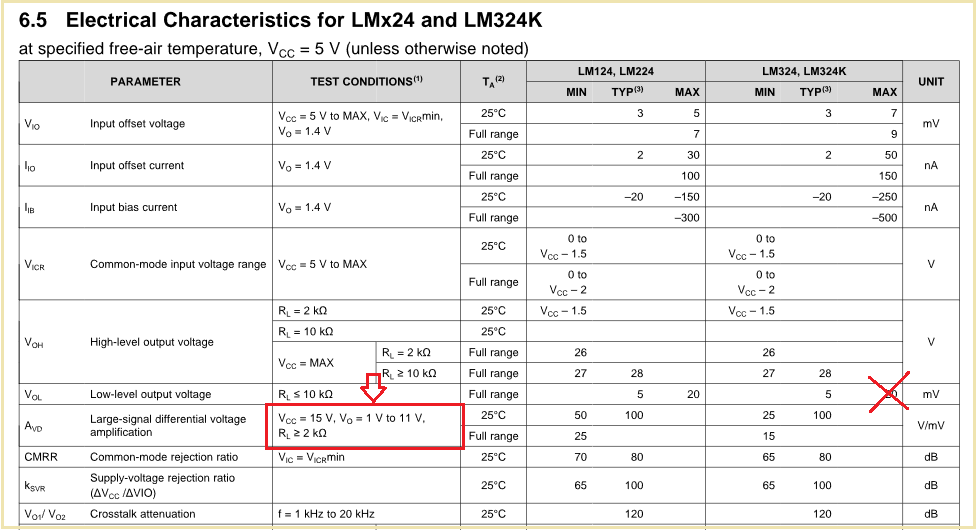Other Parts Discussed in Thread: LMV324, , , , LM7705
Hello.
We wish to select an OPAMP for use with the MSP430FRxx series uCs which have an ADC input range of 0 - 1.5V. The application is very cost sensitive and hence we are considering the LM324(A) and LMV324 devices and wish to select the part which can make full use of the ADC input range.
The LMV324 'Low-level output voltage' is specified as max. 180mV for Vcc = 2.5V - 5.5V, full range of Vcc.
The LM324 'Low-level output voltage' is specified as max. 20mV for Vcc = 5V. Will this spec also hold true for Vcc = 3.3V also?
Assuming it will, would it seem that the LM324 is better suited for this application? -- as the output can swing lower hence making better use of the ADC span.
The LMV is a better, rail-rail part but for this application, the upper output swing dead zone of Vcc-1.5V of the LM324 in not a limitation, but the ability to go lower would be useful..
Please advise.
Thanks,
Tanmay


